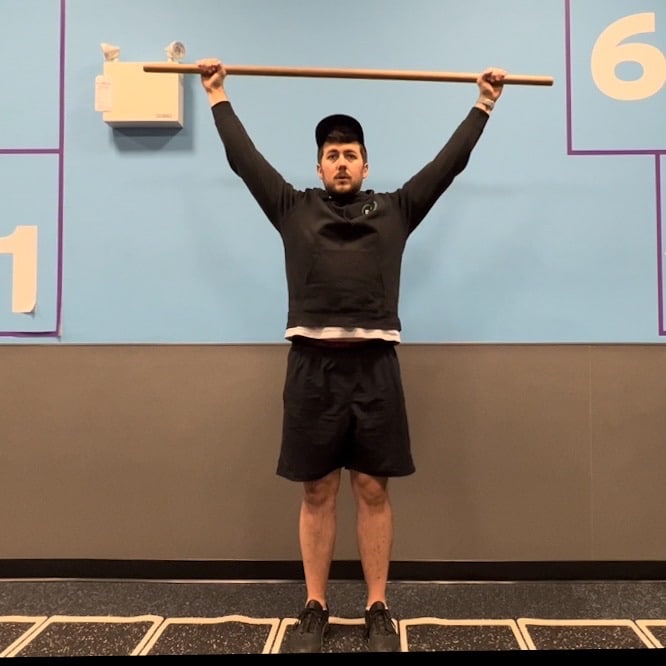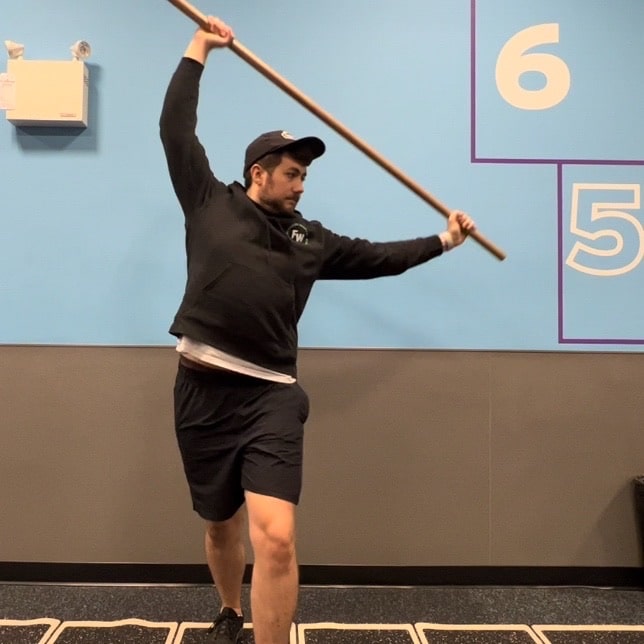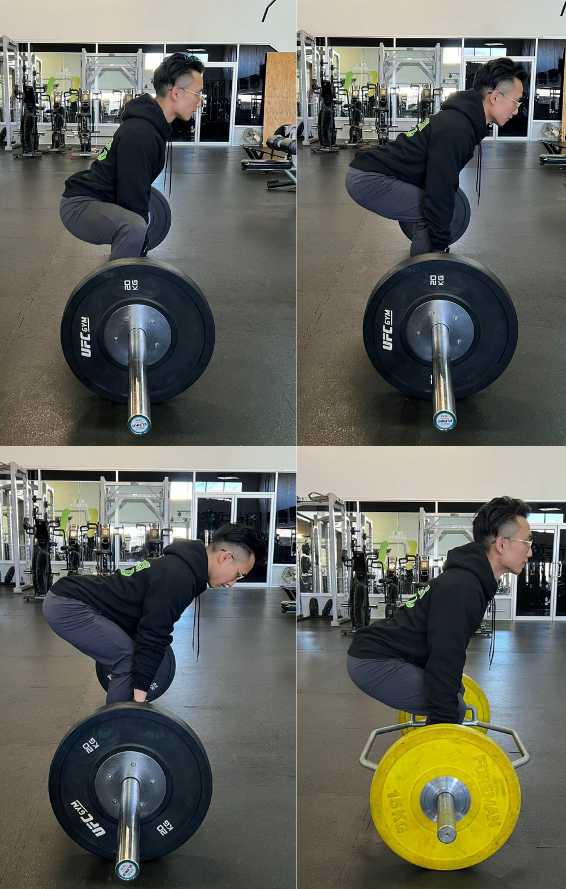December 13, 2021
Bulgarian Bag Warmup – Doweling Rod
Welcome to the Bulgarian Bag Warmup – we will be using the doweling rod exclusively for this warmup sequence. The Bulgarian bag is a highly complex tool. At its baseline level, the Bulgarian bag develops tri-planar movement, improves rhythmic coordination, and challenges multi-joint flexibility.
At this point, anyone who exercises should understand the benefits of warming up. But optimizing warm-ups for the objectives of the upcoming training session is easier said than done. For traditional training sessions, warm-up optimization is relatively simple. The more complex the training sessions become, the more specific the warm-up.
We will be using the doweling rod because it shares significant similarities with the Bulgarian bag. For example, the hands are relatively fixed, so any mobilizing exercise we use with the doweling rod will directly affect the Bulgarian bag’s movements.
The Bulgarian Bag Counter Swing is the foundation for many Bulgarian Bag movements like the shoulder throw and Suples spin. Mastering basics is essential for performance metrics and exercise safety. This sequence of exercises steadily ramps up the neural demand of movement and works through plenty of joint health concepts like flexibility, mobility, stability, and strength. Use this sequence to enhance your movement efficiency.
Quick Note – Before Flexibility Training:
- Inhibit – Foam Roll Thoracic Spine and Latissimus Dorsi.
- Lengthen – TRX Stretches – TRX Chest Stretch, TRX Thoracic Spine & Lat Stretch, and TRX Kneeling Quad Stretch.
- Activate – TRX Inverted Rows.
- Integrate – see below.
Dowel Warmup #1 – Bar-Breaker
The Bar-Breaker uses positional isometrics to activate shoulder stabilizers while the arms are straight. We can use the Bar-Breaker at hip height, shoulder height, overhead, or anywhere between those positions.
The exercise starts at the wrist, but we also want to rotate through the entire arm, including the scapula externally.
- Wrists “break the bar.”
- Elbows fully extend and move towards the torso.
- Shoulders externally rotate, retract, and remain depressed.
- Diaphragm and Abdominals regulate core tension.
This exercise activates the synergistic stabilizing functions of the:
- Brachioradialis.
- Triceps Brachii.
- Posterior Deltoid.
- Rotator Cuff.
- Lower Traps.
- Rhomboids.
- Latissimus Dorsi.
Bulgarian Bag Warmup #2 – Stepping Overhead Bend
The Stepping Overhead Bend promotes coordination of the upper and lower extremities. We use a simple alternating step (lunges if you want to progress this move). The upper body rhythmically joins each step with an overhead extension (think overhead squat position) and a gentle side bend through the torso.
Ensure that the neck stays neutral, shoulders are locked down, and that there isn’t any unwanted movement from the hips (this can be a shift, hike, or rotation).
The key to Stepping Overhead Bend is to use the same isometric technique from the previous exercise: using the concept of positional isometrics, we can keep an active stabilizing force in the shoulders. Using positional isometrics will contribute to thoracic mobility and increased conditioning of the stabilizing muscles.
When optimized, this exercise increases:
- Shoulder mobility.
- Neck stability.
- Thoracic flexibility.
- Heightened motor control.
- The same benefits as the “Bar-Breaker” exercise above.
Bulgarian Bag Warmup #3 – Shifting Counter Twist
This next exercise simulates a Bulgarian Bag movement. The Bulgarian bag is a high-speed, high-risk, high-reward type of exercise. By tracing the outline of the move with the dowelling rod, our Central Nervous System gets to assess the efficiency of movement before leaping into the deep end of intensity.
The Shifting Counter Twist uses alternating lateral shifts (side-lunges without the step, essentially) with an inward, thoracic rotation (twisting towards the extended leg, away from the bent leg). Rack the dowelling rod on your shoulders and start with legs in a position (probably) just outside shoulder-width apart. Keep the feet pointed forward and rooted to the floor. Now you’re ready to move.
Shift the hips laterally to one side, so far that the hip, knee, and ankle line up with the side you’re shifting. As you slide across, rotate your spine inward so that your sternum points back towards your other foot. The shoulders should remain neutral as you twist – rotating with the spine. At the end of the Shifting Counter Twist, fully extend the back elbow for an added shoulder stretch. I know that’s a lot to visualize through text, so check the video above to see it all in action.
When you figure this movement out, you will be increasing the flexibility, mobility, and coordination of the Functional Fascial Lines. Because we are progressing the complexity of the exercise, we also get to reap the Stepping Overhead Bend’s benefits.
Warmup #4 – Bulgarian Bag Counter Swings
Now, we will finally get our hands on the Bulgarian bag. Classifying this exercise as “simple” may seem insensitive, but it is simple compared to the rest of the Bulgarian Bag exercise library. This “simple” exercise will introduce the load and the tempo expected when working with the bag.
It’s essential to keep all the details learned from the previous exercises in place when we pick up the bag – this is where they get tested. We will still use the positional isometrics learned from the “Bar-Breaker,” the rhythmic synergy between upper and lower extremities learned from the “Stepping Overhead Bend,” and the profound rotational control of the functional fascial lines learned from the “Shifting Counter Twist.”
I’m not even going to try and describe the movement in this text; instead, watch the video. Remember to keep the bag away from your body when swinging from side to side, and don’t be scared to drop low into those side lunge positions.
Tags:
Related Posts
We’re here to help you!
Questions, comments or want to register? Fill out the form below and we will contact you shortly. Thanks!
"*" indicates required fields





